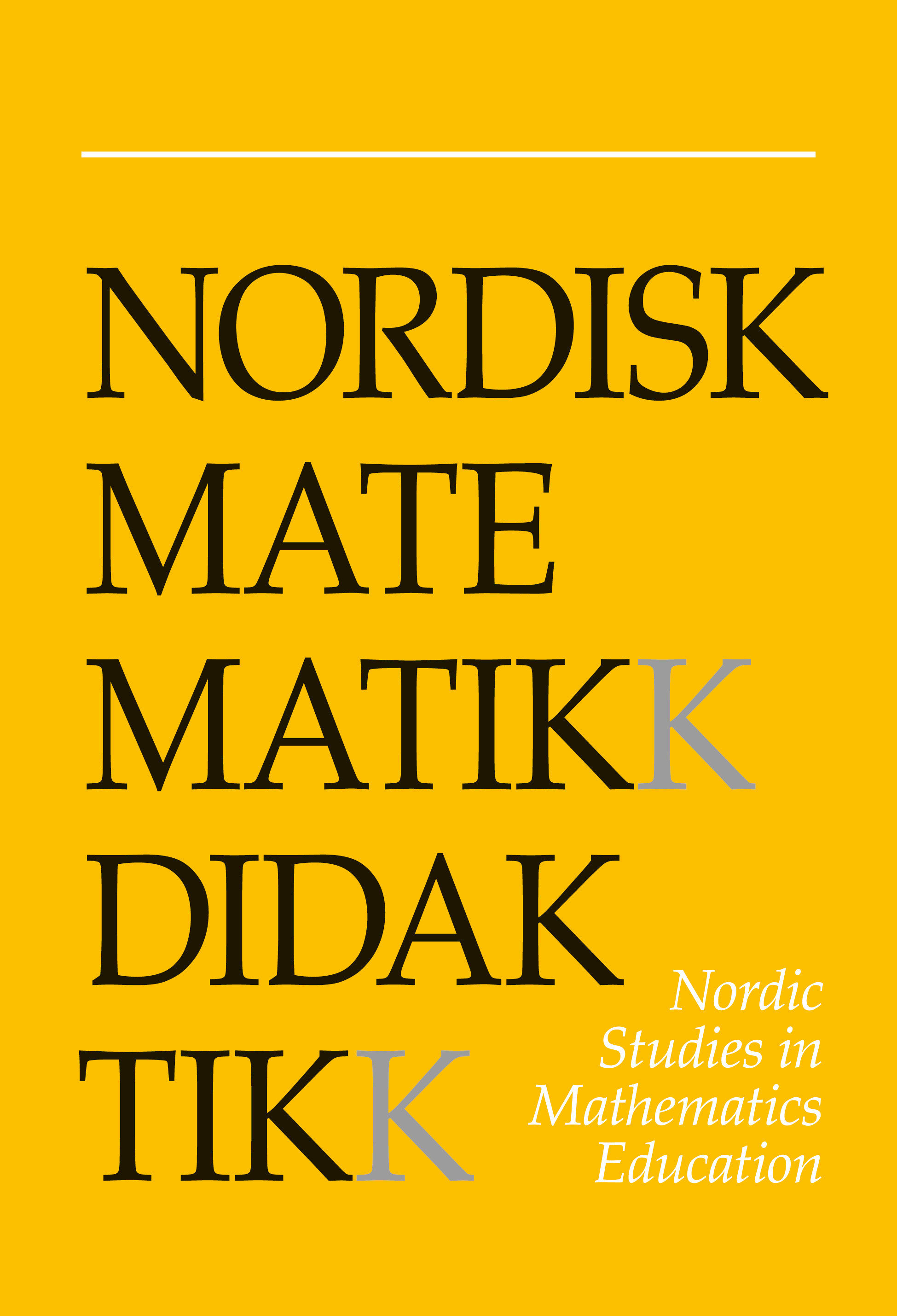Developing practice through research into university mathematics education
DOI:
https://doi.org/10.7146/nomad.v22i4.148914Abstract
The paper provides a very brief outline review of research into some key issues that affect students’ performance in mathematics in higher education. Community of practice theory is used to frame and focus the discussion. Policies regarding the recruitment of students, institutional practices for grouping students and the cultures of teaching and learning mathematics are considered. The research reviewed provides a context for examining the contributions of the research reports included within this thematic issue of NOMAD. The reports address three themes: regular approaches adopted in teaching mathematics in higher education, innovative approaches to teaching and learning, with emphasis on student participation in the educational process, and the characteristics of mathematical knowledge students appropriate. The paper endorses calls for large scale studies, especially those which relate teaching approaches, both regular and innovative, to the qualities and characteristics of students’ learning. The absence of a single overarching theoretical framework that embraces all the studies is also perceived as an obstacle that interferes with scientific developments in the field of researching university mathematics education. However, the value of teachers researching their own practice and their students’ learning is argued to be crucial for developing knowledge ”in practice” and this underscores the value of the papers included in this issue of NOMAD, both for the authors and the inspiration of other higher education mathematics teachers who, it is hoped, will be inspired to engage in similar studies.
References
Andrade, H. & Valtcheva, A. (2009). Promoting learning and achievement through self-assessment. Theory into Practice, 48, 12-19. https://doi.org/10.1080/00405840802577544
Artigue, M. (2016). Mathematics education research at university level: achievements and challenges. In E. Nardi, C. Winsløw & T. Hausberger (Eds.), Proceedings of INDRUM 2016: first conference of the International Network for Didactic Research in University Mathematics March 31-April 2, 2016 (pp. 11-27). Montpellier: University of Montpellier and INDRUM.
Biza, I., Jaworski, B. & Hemmi, K. (2014). Communities in university mathematics. Research in Mathematics Education, 16 (2), 161-176. https://doi.org/10.1080/14794802.2014.918351
Black, P. & Wiliam, D. (1998). Assessment and classroom learning. Assessment in Education: Principles, Policy & Practice, 5, 7-74. https://doi.org/10.1080/0969595980050102
Brousseau G. (1997). The theory of didactical situations in mathematics: didactique des mathématiques, 1970-1990 (N. Balacheff, M. Cooper, R. Sutherland & V. Warfield, Eds. & Trans.). Dordrecht: Kluwer Academic Publisher.
D.E.S. (1982). Mathematics counts. London: HMSO.
Freeman, S., Eddy, S. L., McDonough, M., Smith, M. K., Okoroafor, N. et al. (2014). Active learning increases student performance in science, engineering, and mathematics. Proceedings of the National Academy of Sciences of the United States of America, PNAS, 111, 8410-8415. https://doi.org/10.1073/pnas.1319030111
Hattie, J. (2009). Visible learning: a synthesis of over 800 meta-analyses relating to achievement. London: Routledge.
Hawkes, T. & Savage, M. (Eds.). (2000). Measuring the mathematics problem. London: The Engineering Council.
Lave, J. & Wenger, E. (1991). Situated learning: legitimate peripheral participation. Cambridge: Cambridge University Press. https://doi.org/10.1017/CBO9780511815355
London Mathematical Society (2010). Mathematics degrees, their teaching and assessment. Retrieved from https://www.lms.ac.uk/sites/lms.ac.uk/files/Mathematics/Policy_repors/2010%20teaching_position_statement.pdf
Minards, B. (2012). An exploration of high-achieving students' experiences of learning and being examined in A-level mathematics (Unpublished PhD thesis). University of Birmingham.
Nardi, E. (2008). Amongst mathematicians: teaching and learning mathematics at university level. London: Springer. https://doi.org/10.1007/978-0-387-37143-6
Nardi, E., Biza, I., González-Martín, A. S., Gueudet, G. & Winsløw, C. (Eds.). (2014). Institutional, sociocultural and discursive approaches to research in university mathematics education [Special issue]. Research in Mathematics Education, 16 (2). https://doi.org/10.1080/14794802.2014.918344
Nortvedt, G. A. & Bulien, T. (2016). Rapport Norsk matematikkråds forkunnskapstest 2015. Oslo: Norsk matematikkråd. Retrieved from https://matematikkradet.no/rapport2015/NMRRapport2015.pdf
Opstad, L., Bonesrønning, H. & Fallan, L. (2017). Tar vi opp de rette studentene ved økonomisk-administrative studier? En analyse av matematikkbakgrunn og resultater ved NTNU Handelshøyskolen [Do we enrol the right students on economics-administration studies? An analysis of mathematics background and results at NTNU Business School]. Samfunnsøkonomen, 1, 21-29.
Treffert-Thomas, S. & Jaworski, B. (2016). Developing mathematics teaching: What can we learn from the literature? In M. Grove, T. Croft, J. Kyle & D. Lawson (Eds.), Transitions in undergraduate mathematics education (pp. 259- 276). London: The Higher Education Academy.
UHR (2014). Matematikkundersøkelsen [Mathematics survey]. Universitets- og Høgskolerådet [The Norwegian Association of Higher Education Institutions]. Retrieved from http://www.uhr.no/ressurser/temasider/samarbeid_arbeidsdeling_og_konsentrasjon/matematikkundersokelsen
Wenger, E. (1998). Communities of practice: learning, meaning, and identity. Cambridge: Cambridge University Press. https://doi.org/10.1017/CBO9780511803932
Williams, J. (2016). Mathematics education and the transition into higher education - transmaths demands better learning-teaching dialogue. In M. Grove, T. Croft, J. Kyle & D. Lawson (Eds.), Transitions in undergraduate mathematics education (pp. 25-38). London: The Higher Education Academy.
Downloads
Published
How to Cite
Issue
Section
License

This work is licensed under a Creative Commons Attribution-NonCommercial-ShareAlike 4.0 International License.



